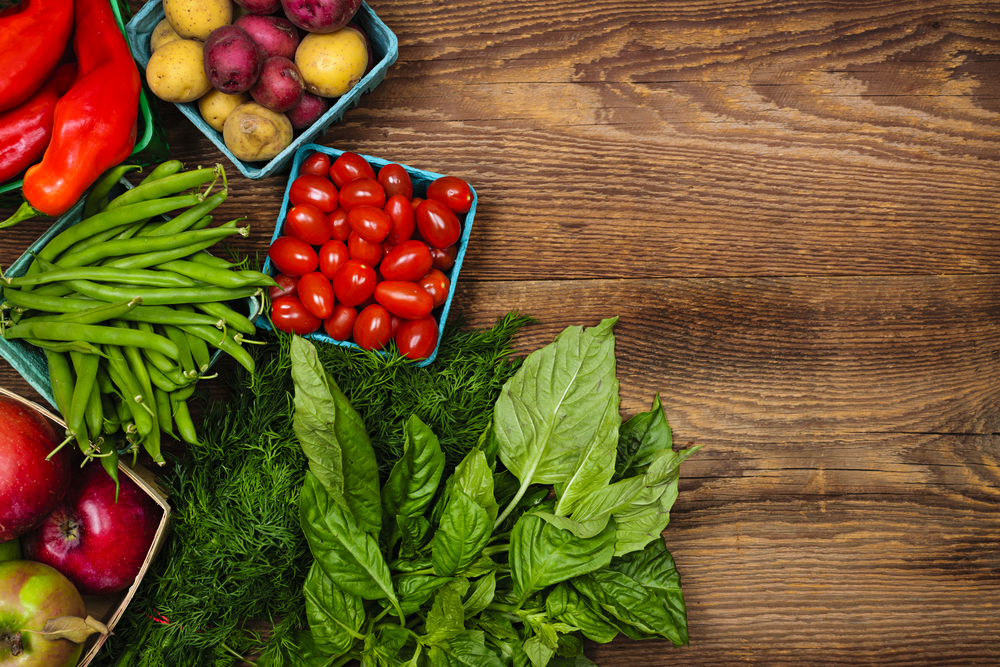

Shipping fresh produce is no joke – it takes careful planning and execution to have fruits and veggies arrive in fresh, edible, and perfect condition. In a time where farm-to-table services are greatly appreciated and coveted, sending out produce effectively and efficiently is crucial. This guide will walk you through all of the basics, as well as some special tips as you get started.
Pack Your Fresh Produce According to Temperature
First and foremost, the temperature. Your main goal here is to make sure that your produce remains at a safe temperature for the entirety of its journey. When shipping fresh produce, be sure to consider the temperature range that each product requires for transport. This guide from LSU’s Agriculture Center has a quick table with a great rundown of the best temperatures for each produce type.
Before you pack the product for shipping, be sure to cool it to the temperature that you’ll be shipping it at. This will prevent any condensation from warm food cooling during transit, since moisture is our enemy here. The more dry the conditions are for shipping, the safer your fruits and vegetables are.
You’ll want to pack each temperature group separately into thick foam containers. Those containers need to be lined with absorbent padding to soak up any condensation from the gel packs in the container. The purpose of the gel packs is to keep food cool and unfrozen between 32-60 degrees Fahrenheit. You’ll add those in depending on the temperature your items need to stay at, and this will also vary based on how thick the foam container is. The thicker the container, the better insulated, and the slower these packs will melt. Your containers should be a minimum of 1.5 inches thick for cooled items.
With the goal of end-to-end temperature control, keep in mind that you’ll never want your product to heat or cool beyond its comfortable range during the 24-36 hours it’ll be in transit. The key to shipping fresh produce is ensuring that your products stay cool, dry, and fresh.
Package Produce to Prevent Damage, Spoilage, and Temperature Changes
Packaging is a huge factor in this process, so take your time and carefully plan this one out. Basically, your package should be a lined, corrugated, cardboard box with gel packs separated from the items with a piece of cardboard. The product should be in a plastic bag with some moisture-wicking materials to ensure that the produce remains dry. Your fresh produce should be heavily bubble-wrapped and padded, and beyond the cardboard, surrounded by cooling packs and insulated pads. Handy little items like polystyrene or polyurethane foam will help to reduce the amount of heat transferred to the items, as well as maintain the temperature in the actual box.
Inside the Box
For the interior of every shipment, you’ll want to:
- Line containers with waterproof lining and absorbent padding
- Fill extra space with bubble wrap and packing peanuts to minimize movement
- Add 2-3 inches of protection in all directions around the items, and pack your items in the center of the package
- Stabilize items in the cooler using bubble wrap
- Place the food in sealed plastic bags to keep it separate from gel packs
- Use cardboard to separate gel packs from produce
Pro tip: Consider using soft foam inserts for fruits and veggies that are extra fragile. Add extra plastic wrap to keep temperature in. Never use newspaper, since it won’t pad anything or soak moisture well.
Outside the Box
For the outside of each shipment, be sure to:
- Use brand new, sturdy, corrugated boxes
- Mark package with the phrases “Perishable – Keep Refrigerated,” “Fragile,” and “Food Contents”
- Seal your box on all sides with pressure sensitive packing tape that won’t detach in cold/hot conditions. Tape every edge of the box to keep the cold contained.
Pro Tip: You can find almost all of the supplies you’ll need for shipping fresh produce on ULINE. Check out the site to find foam coolers, gel packs, insulated liner, thermal bags, and more!
Always Plan Ahead
Always, always, always plan ahead! Make sure that your shipments are sent out early in the week, so that they won’t be stuck in any place over the weekend. Once you ship out, keep an eye on your shipment tracking page to make sure your package arrives on time. You should plan for your shipments to survive between 24-36 hours of transit and stay under 40 degrees Fahrenheit throughout.
Make sure the recipient knows when the item arrives so they can immediately unpack and store the produce safely. The items should be at least 40 degrees (if not colder) upon arrival to ensure freshness has been maintained throughout. You might also consider providing instructions for the recipient, so they know to make sure the product is safe to consume upon arrival.
Also, you’ll want to make sure that you’re meeting any and all FDA requirements for shipping your produce.
Ship Fresh Produce with Fast Shipping Services
Okay, so we know how to cool it, pack it, and to plan it… now to ship it! We suggest that you invest in an express service, no matter which carrier you’re using. Your produce will only last so long in transit, so getting it to the destination as quickly as possible is key here. The following services are express and fit for produce transport:
- USPS Priority Mail Express (This is a money-back guaranteed service. If USPS is late on the guaranteed delivery date and time, you’ll get the cost of postage credited back to you)
- UPS offers a number of express shipping services (Notably Next Day Air, Early Air, and Air Saver)
- FedEx also offers a couple of express options (Including First, Priority, or Standard Overnight)
Use Online Shipping Software to Save Money on Shipping Fresh Produce
Express shipping can definitely get expensive, so saving money where you can is super important! The best way to save is by taking advantage of the low rates offered through online shipping software, where you can access the deepest discounts like Commercial Pricing, and where all USPS services are available for use.
On top of that, with the online software of your choice, you can print those labels from the comfort of your couch (or farm)! This will allow you to keep your produce in the best conditions possible up until you hand your shipment over to your carrier of choice.
Our Reviews page has some great recommendations, if you’re on the hunt for some shipping software options.
Lettuce Review
Excuse the pun, but let’s go over the big takeaways here. Be thoughtful about the cooling and packaging techniques you’re choosing. You might even benefit from running a test at home to see how long your produce lasts, and how it best lasts with different amounts of coolant and insulation. Once you’ve got that down to a science, be sure that your outer packaging contributes to the dry and cool environment for your fresh produce. After that, make sure you’re using an express service to ship the produce out, and use shipping software to capture the deepest discounts on your postage! We know we just made a whole lot of work sound like a breeze, but once you get the hang of it, you’ll be all set.


Mohammad
Hi
We want to import Fresh Ginger from India, in 40 ft reefer container with a sea transit time of 20 days.
Packaging type is 50kg each Mesh Bags. Total 440 Bags.
Temperature we use 12 degree Celsius.
Kindly advise that is this maintain our product quality and shelf-life.
We can’t have time to pack in boxes so we are using Mesh Bags.
Is this way of shipping is fine for Fresh Ginger with mature brown skin.
What else precautions do we need in it.
Humidity etc.
Custom House told that Reefer container have automatic adjustment, once the required temperature is entered then reefer container automatically adjust it’s humidity etc by it self. Is it correct or do we need to do manually.
Kindly reply your answer todayon my email address
Walter Jordan
I cannot comment specificall on this deal. I can say THAT I HAVE NEVER lost money on a real estate deal. This deal is similar. What happens when product arrives spoiled? Do you have insurance?
Think carefully about the negatives after talking to experts.